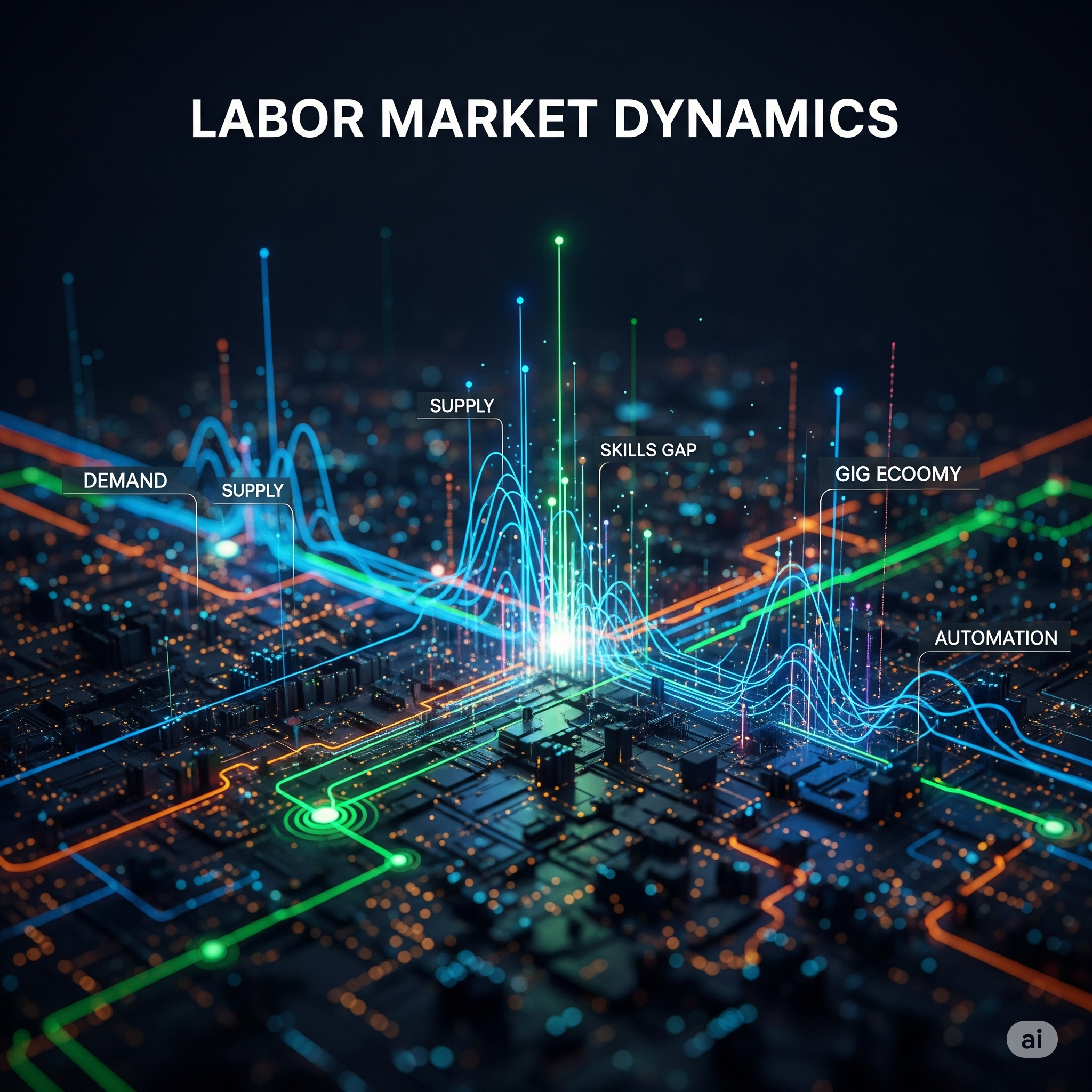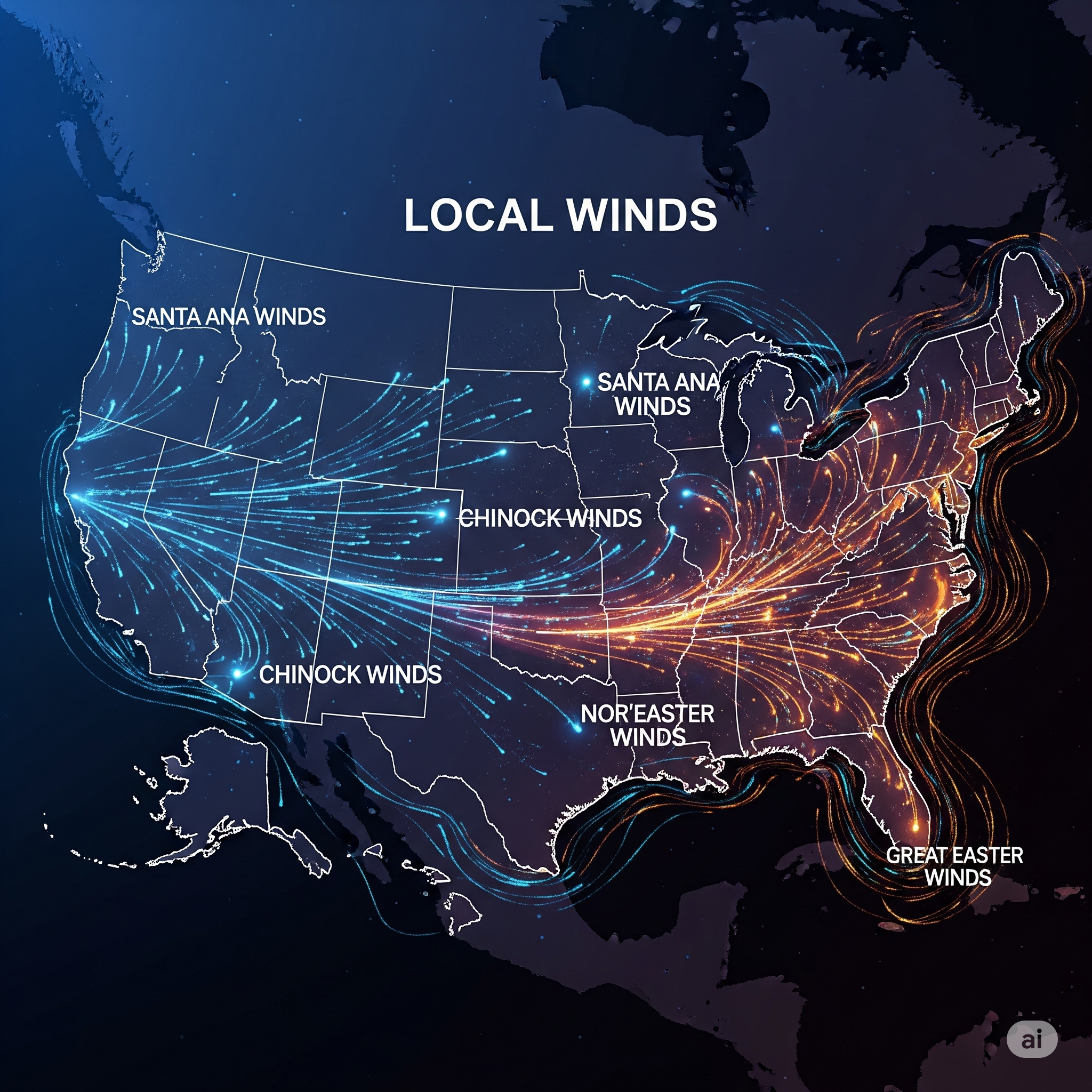Introduction
The labor market is one of the most critical pillars of any economy, and in the case of the United States, it plays a central role in shaping both domestic prosperity and global economic trends. As the world’s largest economy, the U.S. labor market reflects the complexities of demographic changes, technological transformations, globalization, and evolving policy frameworks. The labor market dynamics of the United States involve the interaction of supply and demand for labor, wage determination, employment trends, unemployment rates, labor mobility, and the role of institutions such as labor unions and government regulations.
This essay aims to provide an in-depth understanding of the labor market dynamics in the United States by exploring historical background, structural features, key challenges, technological disruptions, and future trends.
1. Historical Background of the U.S. Labor Market
The U.S. labor market has evolved significantly over the last two centuries, transitioning from an agrarian economy to an industrial powerhouse and then into a service and technology-driven society.
- 19th Century: Dominated by agriculture and early industrialization, with immigration fueling the supply of labor.
- Early 20th Century: Rise of mass production, factory work, and strong labor unions. Labor laws, such as the Fair Labor Standards Act (1938), established minimum wages and limited working hours.
- Post-World War II: Economic expansion and the rise of the middle class. Union membership was high, and manufacturing jobs dominated.
- Late 20th Century: Deindustrialization and offshoring of jobs. Service sector employment increased, while union membership declined.
- 21st Century: Technology, globalization, and automation reshaped work. Knowledge-based industries, gig work, and digital platforms gained prominence.
2. Key Features of the U.S. Labor Market
The U.S. labor market is distinct due to its flexibility, mobility, and adaptability. Some core features include:
- Labor Force Participation Rate: The percentage of people working or actively seeking work. While it was around 67% in 2000, it has declined to around 62% in recent years, largely due to aging demographics.
- Unemployment Rate: Historically fluctuates with economic cycles. For example, it reached 14.8% in April 2020 during the COVID-19 pandemic but declined to around 3.6% by 2023.
- At-Will Employment: Employers and employees have the flexibility to terminate employment without long-term contractual obligations, making the market highly dynamic.
- Wage Structure: Wages in the U.S. vary widely by skill level, industry, and location. Technology jobs and finance often offer high salaries, whereas retail and hospitality tend to pay lower wages.
- Unionization: Union membership has declined to less than 11% of the workforce, weakening collective bargaining power.
- Diversity and Immigration: Immigrants constitute a significant portion of the labor force, particularly in construction, agriculture, and technology sectors.
3. Labor Market Indicators
Several indicators help measure the health of the labor market:
- Nonfarm Payrolls (NFP): Monthly jobs data reflecting employment growth.
- Labor Force Participation Rate (LFPR): Tracks active engagement in the workforce.
- Average Hourly Earnings: Key indicator of wage growth and inflation pressures.
- Job Openings and Labor Turnover Survey (JOLTS): Provides data on job vacancies, hires, and quits.
- Productivity Levels: Efficiency of labor in producing goods and services.
These indicators guide policymakers, businesses, and investors in understanding labor dynamics.
4. Challenges in the U.S. Labor Market
(a) Skills Gap
There is a mismatch between available jobs and the skills of the workforce. Many employers struggle to find workers proficient in advanced technology, data science, and healthcare.
(b) Wage Inequality
Income inequality has widened. High-skilled workers in tech and finance experience rising wages, while low-wage workers face stagnant pay.
(c) Decline in Manufacturing Jobs
Automation and offshoring reduced traditional blue-collar jobs, especially in the Midwest, contributing to regional economic disparities.
(d) Demographic Changes
An aging population increases pressure on social security systems and reduces labor force participation.
(e) Gig Economy and Precarious Work
Platforms like Uber, DoorDash, and freelance marketplaces have created flexible opportunities but often lack job security, healthcare benefits, and retirement plans.
5. Technological Impact on Labor Market Dynamics
Artificial Intelligence and Automation
AI-driven automation has reshaped industries like manufacturing, logistics, and customer service. While it boosts productivity, it displaces low-skill jobs.
Remote Work and Digital Platforms
The COVID-19 pandemic accelerated remote work adoption. Digital platforms such as Zoom, Upwork, and LinkedIn have redefined labor mobility and global collaboration.
Gig and Freelance Economy
Technology has enabled millions of Americans to earn through short-term gigs. However, this raises debates about worker rights, income stability, and labor regulations.
6. Policy and Institutional Role
(a) Government Policies
- Minimum Wage Laws: Federal minimum wage is $7.25/hour, though states like California and New York set higher rates.
- Unemployment Insurance: Provides income support during joblessness.
- Workforce Training Programs: Initiatives to reskill workers in new industries like AI and renewable energy.
(b) Role of the Federal Reserve
The Fed monitors employment levels and inflation through monetary policy. High inflation may push the Fed to raise interest rates, slowing job growth but controlling prices.
(c) Labor Unions
Although declining, unions still influence wages, benefits, and working conditions in certain sectors like education, healthcare, and public services.
7. Regional Labor Market Differences
The U.S. labor market is not uniform. Different states and regions show distinct patterns:
- Silicon Valley & Tech Hubs: High wages, high demand for skilled workers.
- Rust Belt: Decline in manufacturing jobs, higher unemployment rates.
- Sun Belt States (Texas, Florida): Strong job growth due to lower taxes and business-friendly policies.
- Urban vs Rural Divide: Urban areas offer more diverse job opportunities, while rural regions face limited prospects.
8. Labor Market and Globalization
Globalization has both positive and negative impacts on the U.S. labor market. While it creates opportunities in global trade, it also leads to job losses in industries exposed to foreign competition. Outsourcing and supply chain relocations often hurt manufacturing workers but benefit technology and service sectors.
9. Future Trends in the U.S. Labor Market
- Rise of Green Jobs: As the U.S. invests in clean energy and sustainability, jobs in renewable energy, electric vehicles, and environmental management will grow.
- Increased Demand for STEM Skills: Science, technology, engineering, and mathematics will dominate job opportunities.
- Hybrid and Remote Work Models: Work-from-home flexibility will remain a long-term trend.
- AI Integration: Workers will need to adapt to AI tools, creating new job categories in human-AI collaboration.
- Focus on Worker Benefits: Policymakers may push for stronger gig worker protections, paid leave, and universal healthcare coverage.
10. Conclusion
The labor market dynamics of the United States are shaped by a combination of economic policies, technological advancements, demographic shifts, and globalization. While the market is highly flexible and adaptive, challenges such as wage inequality, skill mismatches, and job insecurity persist. The future of the U.S. labor market will depend on how effectively policymakers, businesses, and workers address these issues while embracing innovation and sustainability.
In conclusion, the U.S. labor market represents a microcosm of broader global transformations. By balancing innovation with inclusivity, the United States can ensure that its labor force remains resilient, competitive, and equitable in the decades to come.




